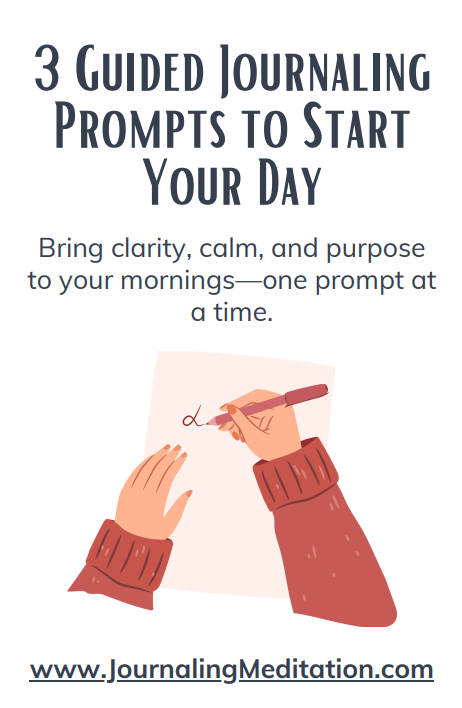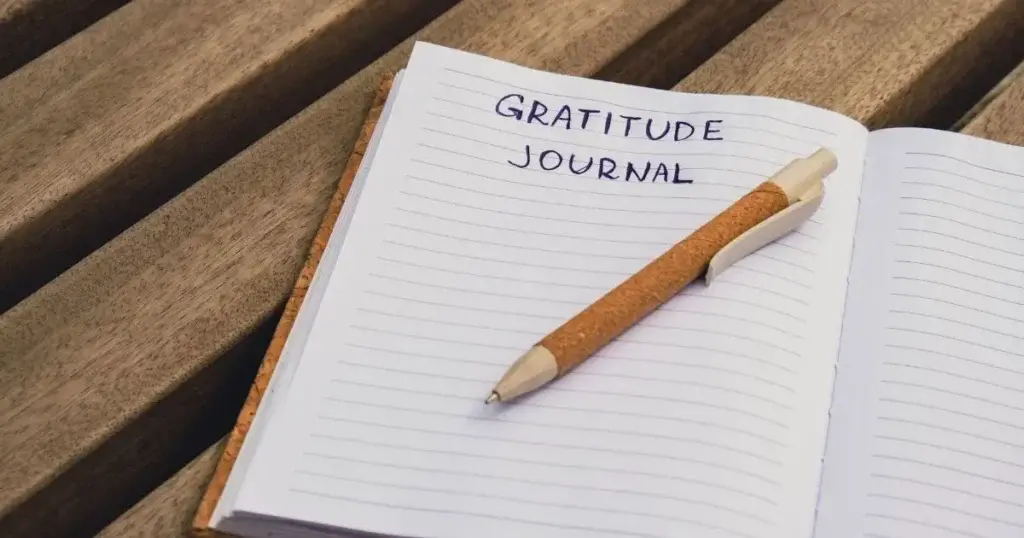
Updated 11/2025
Have you ever wondered “what is a gratitude journal for?” It’s a fair question. You’ve seen the Instagram posts, promoting something trendy like the latest journal or maybe even bought a beautifully leather covered notebook only to let it sit on the shelf.
But a gratitude journal isn’t just a nice purchase to help you feel good. It can genuinely shift how you notice and respond to your life and everything in it.
Let’s take a look at what a gratitude journal actually is, why it matters, how it works (yes, science included), how to get started and the common roadblocks. Whether you’re a complete beginner or a journaling pro who wants to take it deeper, this guide has you covered.
TL;DR
- A gratitude journal is a dedicated space (digital or paper) to regularly record things you’re grateful for. And it’s specifically for rewiring your brain to focus on positives.
- Research shows consistent gratitude journaling is linked with reduced stress, better sleep, improved mood, and stronger relationships.
- Anyone can do it! Busy parents, the sceptic, professionals. It works best when you commit to a simple habit, not perfection.
- Starting is simple: set aside 5‑10 minutes, pick a prompt, write 3‑5 specific things you’re grateful for, and reflect. Over time you can deepen and expand the practice.
- A gratitude journal isn’t a “magic fix”, but is a highly accessible, science‑backed tool that complements meditation, therapy, or any other self‑growth path.
Click Here For The Best Journaling Tools Of 2025
What Is a Gratitude Journal, Really?
Before digging into what it’s for, let’s get clear on what it is.
A gratitude journal is simply a notebook (or it can also be an app, or a digital document) where you regularly write down things you’re thankful for. It might be things that happened recently, people in your life, or small everyday moments that usually go unnoticed.
Gratitude journaling vs. other journaling styles
- Reflective/emotional journaling: “Here’s how I feel, what happened, what I learned.”
- Stream‑of‑consciousness journals: Free‑writing about whatever comes to mind.
- Gratitude journal: Focused on noticing and recording what you’re grateful for.
- Bullet journals / mixed formats: May include gratitude sections for reflection, but also for organized tasks

The Big Why: What Is a Gratitude Journal For?
Now we get to the purpose: why you’d bother and what the long‑term value is.
1. Rewiring Your Brain for Positivity
Our brains have a negativity bias that theoretically help us spot threats. Gratitude journaling helps bring your attention to what’s going on for you. Over time, you build stronger neural pathways by noticing positive things.
2. Managing Stress, Anxiety, and Low Mood
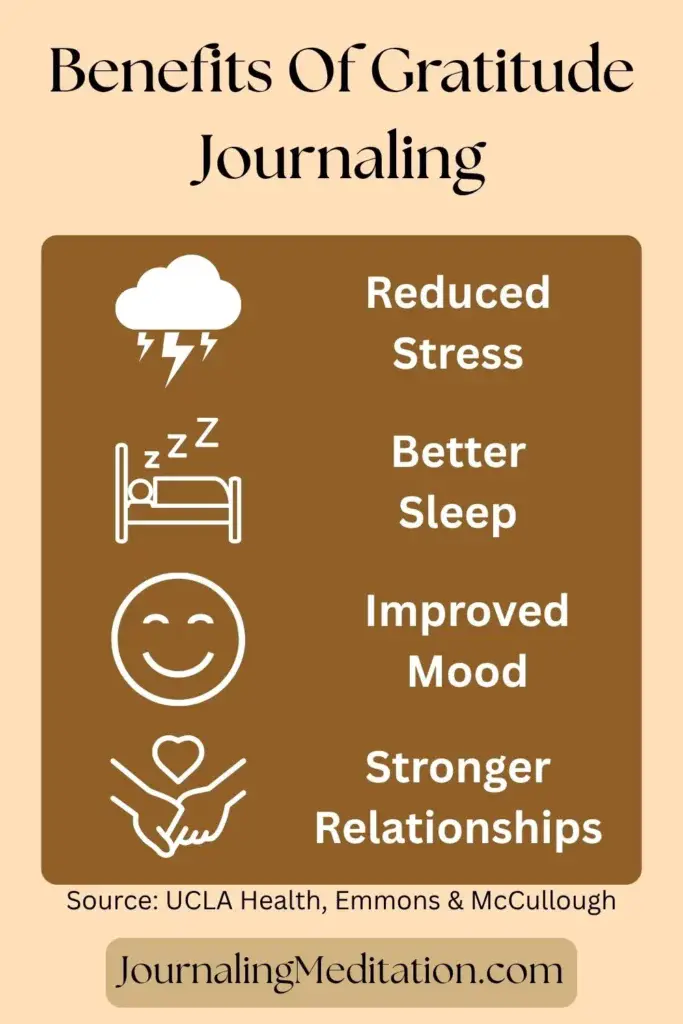
Studies show that practicing gratitude can contribute to lower levels of depression and anxiety, better sleep, and stronger resilience to stress. For example, one review found higher levels of gratitude linked with lower depression symptoms.
Bullet list of benefits:
- Reduces rumination on negative events
- Encourages a present‑moment awareness
- Supports nervous‑system relaxation (parasympathetic activation)
3. Deepening Mindfulness and Presence
Reflecting on what you are grateful for can be a form of mindfulness. The act of noticing, writing, or even noticing that feeling slows you down and can anchor you in the here‑and-now.
4. Strengthening Relationships and Social Connection
When you shift your gratitude towards others, you create empathy, connection and a meaningful social presence. Gratitude journaling doesn’t only benefit you. It can have a rippling effect on others.
Who Is It For? (And Who It’s Not For)
Yes, a gratitude journal is helpful. But like anything else,it’s not a one‑size‑fits‑all cure.
You might benefit if you are:
- A busy parent or professional who rarely stops to reflect on positive moments.
- Someone feeling stuck in negativity loops or “what’s missing” mindset.
- Already journaling in other ways and want to deepen your practice.
- A meditator who wants a complementary practice to bring themselves to the next level.

It might not be enough (on its own) if:
- You are going through serious clinical depression, trauma, or ongoing crisis. In those situations, gratitude journaling can help, but it should be paired with professional support.
- You’re looking for something purely to just showcase as a prop for everyone else. This will never create value needed for consistent habit building.
How to Start a Gratitude Journal
Here’s your 3‑step roadmap to starting a gratitude journal you’ll actually stick with.
1. Tools: What You Need
- A simple notebook or journal (doesn’t need to be fancy).
- A pen you enjoy writing with (makes a difference!).
- Or an app / digital doc if you prefer typing.
- A quiet spot and a consistent time (one of the most helpful tools).
2. When + How Often to Write
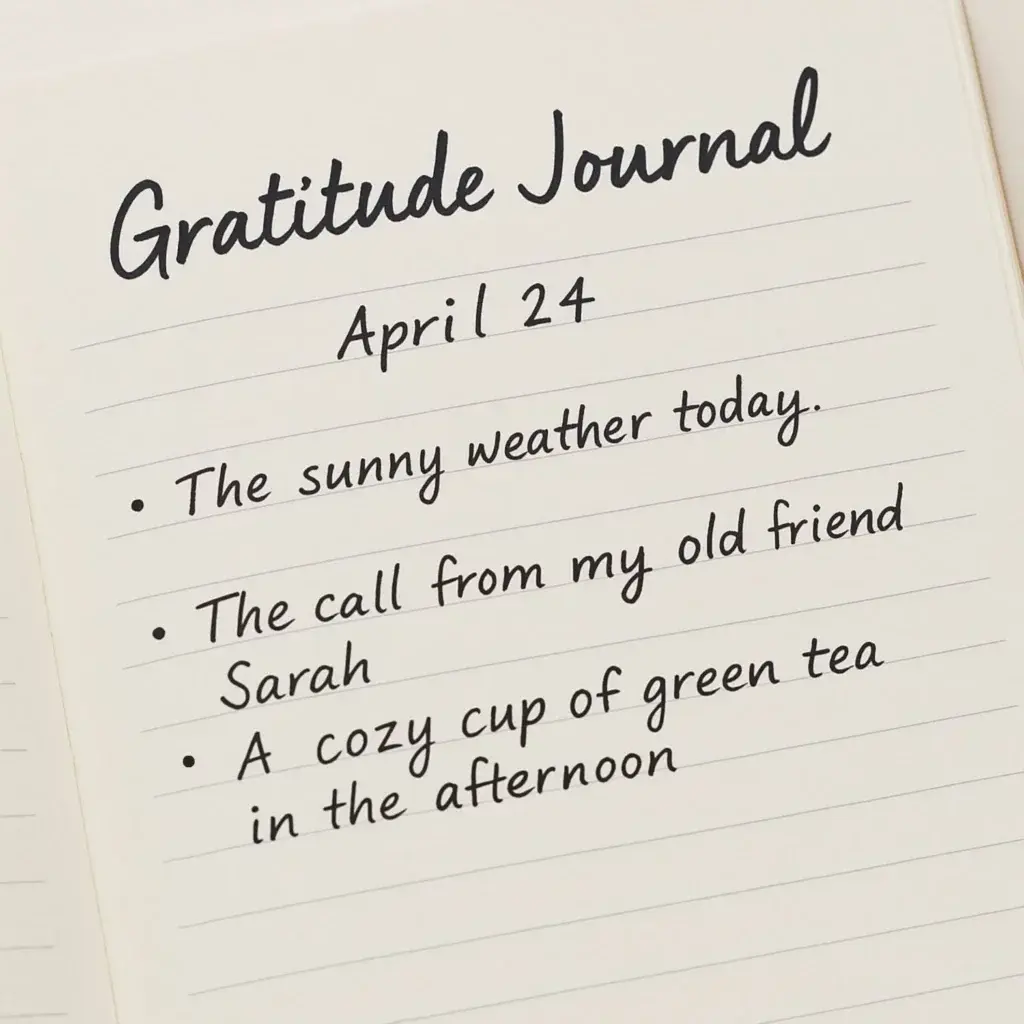
- Daily: A lot of folks report benefits from just 5 to 10 minutes a day. Perfect for forming a habit.
- Weekly: Also very effective. Some research suggests a weekly session might reduce “ritual fatigue”.
- Tip: link the writing to an existing habit (maybe during coffee or just before bed). Keep your journal by the coffee pot or on the pillow.
3. What to Write: Prompts & Examples
- Write 3‑5 things you’re grateful for. Be specific. For example, “I’m grateful that my coworker brought me soup when I was sick Tuesday” rather than “I’m grateful for my coworkers.”
- Prompts to try:
- What made me smile today?
- Who helped me recently and how did it make me feel?
- What’s something I took for granted until now?
- A challenge I faced and one small thing that helped.
- What made me smile today?
- Example entry:
I’m grateful for the 10‑minute walk I took at sunset. I got fresh air, exercised and cleared my head..
Common Roadblocks (And How to Get Past Them)
Let’s address the realistic hurdles… and how to get around them.
- “I don’t have time” Try the “3‑Minute Method”. Just write 3 things you’re grateful for in 3 minutes. Done.
- “I can’t think of anything new” Go for small things. A clean mug. A phone call. A cloud shape you noticed.
- “It feels forced or fake” Understand that early entries will feel awkward. Over time, authenticity grows. You’re building a habit, not a forced emotion.
- “I skipped a few days. So why bother?” Skip doesn’t mean failure. Treat missing days as learning opportunities: What stopped you? Address the roadblock.
Advanced Gratitude Journaling Techniques
Already got the basics down and want to go deeper? Here are some advanced ideas to expand the practice.
- Gratitude Letters: Write a letter to someone expressing deep thanks. Don’t just list the thanks, but offer why.
- Narrative journaling: Instead of “I’m grateful for X”, write a mini‑story about the moment, how it unfolded, and how it impacted you.
- Pair with visualization + affirmation: After writing, close your eyes for 30 seconds and visualise the thing/person you’re grateful for.
- Theme weeks or months: Create timely themes such as “people I admire”, “moments of growth” or “unexpected kindness”. This opens up perspective and can keep things fresh.
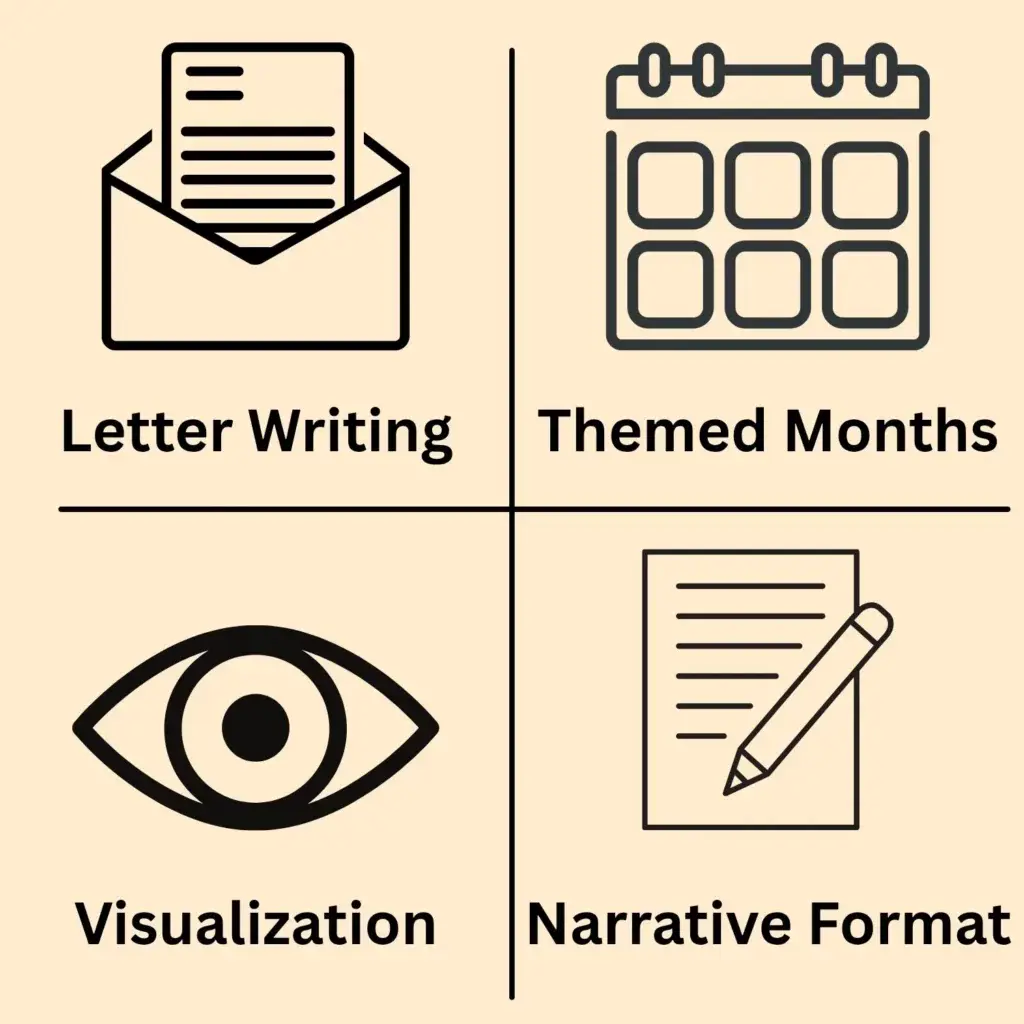
Recap: Why Gratitude Journals Actually Work
- They shift attention from not having to having.
- They slow you down and help you appreciate the present.
- They reinforce the neural pathways of recognition and appreciation.
- The positivity ripples outward into relationships and wellbeing.
- They’re low‑cost, easy to use, and science‑backed.
Gratitude Is a Practice, Not a Personality
Keeping a gratitude journal isn’t about being perpetually positive or living up to the standards of being perfect. It’s about creating and returning to the power of noticing, acknowledging, and reflecting. Some days you’ll write non stop, some days you’ll struggle for one sentence. Some days you may get lost in emotion, some days you’ll barely feel anything. That’s okay. The value lies in consistency, not expectation.
Pair this with a quiet corner for reflection, your meditation cushion, or your bedtime routine and you’ll find your mindset patiently shifting. Over time, you might realize: you don’t just have a gratitude journal. You are gratitude.
FAQ: Quick Answers to Your Top Questions
Here’s a little bonus: frequent questions people ask around what is a gratitude journal for? Answered in bullet form for easy readability.
❓ Why should I keep a gratitude journal?
- It helps you extract and notice positive areas of life.
- It trains your brain to be more naturally appreciative.
- It supports mental and physical wellbeing.
⌛ How long does it take before I see benefits from gratitude journaling?
- Some studies show benefits after roughly 6 weeks of regular practice.
- Additionally, many people notice a shift in mood or perspective even after just a week of consistent journaling.
📝 Can I use an app or digital format instead of paper?
- Yes. The format matters less than the habit of showing up for yourself.
- Be sure to still make it intentional (watch out for random scrolling).

Gratitude is one of our greatest powers to shine light on what may seem hopeless. A journal exemplifies that power from thought to word and can help remind you of that power. Try it for a week. What could go wrong? I’d love to hear your experiences.
💬 Would you like to try a free prompt? Share your experience below! “What’s one thing you’re grateful for right now, and why?”





